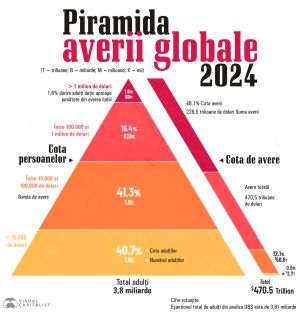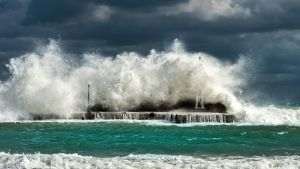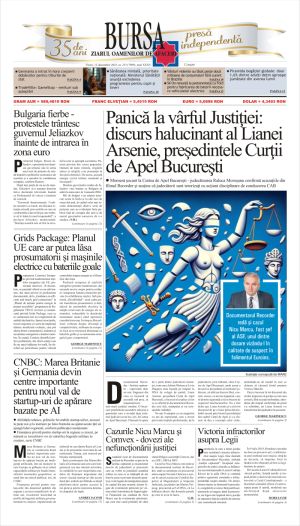
The emancipation in relations with God pursued in the background of this essay is accompanied by a complementary process of recession of sacredness, as Sforno (1) argues, without specifying that the basis of his statement is legendary:
"Despite all the material wealth invested in both Solomon's Temple and Herod's Temple, in Moses' Tabernacle - a foldable structure - the presence of God was felt much more than in the Temple built by Solomon, not to mention the second Temple where the Presence of God was never manifest." (2)
A similar regression seems to be taking place in the realm of literature, from the Torah/Pentateuch to the literature of the New Testament Gospels: the latter relate the last days of Jesus Christ (as both man and God) in the earthly world of man, but the character of the text is essentially narrative, without expressing self-reference, as in the first five books of the Bible.
The fate of the Temple is similar to the fate of the Book. The commentary must adapt to this descent, which cannot be easily accomplished in the very heart of the articulation between the texts of the Old and New Testaments (where this essay has arrived), because it must give up seductive models (sometimes Kabbalistic, triggering the highest experience in itself) used in the case of the Pentateuch and investigate the matter without being picky about the tools of philosophy, sociology, law, history, and even finance and politics.
King Herod the Great (74 BCE - 4 BCE) did not himself complete the reconstruction of Zerubbabel's Temple - the Second Temple - but it is said that he began it in 20/19 BCE (Flavius Josephus claims that it was done in the first ten years, but chroniclers claim that some work continued until around 63 CE), so Hillel, who, as historians attest, would have been the Nasi of the Sanhedrin for forty years, in the period 30 BCE - 10 CE, must have administered, in his last thirty years, the religious emulation that the Temple arouses whenever it is restored or replaced, as an act of worship to God.
The temple built by the evil forces is the reason for the pseudo-epigraph of the Old Testament entitled "The Testament of Solomon," dated approximately in the first four centuries of the Christian era, as informed by Stefan Colceriu in the "Introductory Study" (3). This may have carried the memory of the paradox whereby the Temple was rebuilt by the most horrific dictator among the kings of the Jews, who also attacked their faith and religious institutions (see Annex 1).
As a historical figure, Hillel must have led the Sanhedrin with a triple determination that could not have failed to affect his religious authority:
the bloody terror of local royalty;
the political and economic subjugation of the kingdom to Rome;
the intolerance of the Commandments to any subordination contrary to that of God.
This would result in Hillel having two masters in the worldly hierarchy, and according to the usual apology of his biographers, who attribute humility to him, he would have submitted to the heavenly, intangible master as well, which constitutes an equation that he does not seem to have actually solved.
His line of teachings - liberalism in interpreting the Law, going so far as to distance himself from it and suspend the application of some divine Commandments - drew disapproval from certain segments of the population, from whose explicit record a censored fragment of the "Sermon on the Mount" delivered by Jesus Christ remains, as recorded in the "Gospel of Matthew" - translated by Cristian Badilita, as being clearer than the synodal version (4):
"17. Think not that I am come to destroy the law, or the prophets: I am not come to destroy, but to fulfill.
18. For verily I say unto you, till heaven and earth pass, one jot or one tittle shall in no wise pass from the law, till all be fulfilled.
Whosoever therefore shall break one of these least commandments, and shall teach men so, he shall be called the least in the kingdom of heaven: but whosoever shall do and teach them, the same shall be called great in the kingdom of heaven.
For I say unto you, that except your righteousness shall exceed the righteousness of the scribes and Pharisees, ye shall in no case enter into the kingdom of heaven." (Matthew 5)
The "Sermon on the Mount" is the most studied text in the New Testament, considered essential to Christianity by Christian exegesis. Although it seems to have an obvious meaning (see Annex 1), exegesis overlooks the fact that Jesus refers here, directly and personally, to Hillel and his nephew, Hillel Gamaliel.
(The second part of this episode will be published tomorrow)
Notes
(1) Sforno, Obadiah ben Jacob (c. 1470-c. 1550), Italian Jewish biblical commentator and physician; while generally limiting himself to the literal exegesis of the biblical text, he goes beyond this to offer an exposition in line with contemporary scientific perspectives (for example, on Creation), while avoiding mystical and kabbalistic interpretations.
(Encyclopaedia Judaica, Second Edition, Volume 18/p.333)
(2) Sforno on Exodus 38:24/Eliyahu Munk, HaChut Hameshulash, Lambda Publishers
(3) "The Testament of Solomon"/page 8/Humanitas/2010
(4) "The New Testament/The Gospel of Matthew"/ Bilingual edition/Unpublished translation and commentary by Cristian Badilita/Vremea Publishing House/Bucharest/2015/page 37
Appendix 1
Solomon's Temple and Notre-Dame Cathedral
The clash between a Talmudic text and a Christian pseudo-epigraph highlights the trauma caused by the construction of buildings dedicated to God, using malevolent forces, as can be perceived in the restoration of the Second Temple by King Herod the Great. In Gittin 68a, the Gemara addresses the question of why the author of Ecclesiastes, Solomon, needed to use male and female demons.
In a passage from the Book of Kings, it is said that the stone used for the construction of the Temple was not cut with a hammer or any iron tool, but was precisely cut without any noise.
Here are the main ideas of this story from the Gemara:
Solomon asked how he could cut the stone without using iron, and the sages told him to torture male and female demons together to find out the secret, but they could not reveal the location of the shamir, so Solomon sent to search for Asmodeus, the king of the demons;.
Asmodai was found and captured through the stratagem of a member of the royal entourage, Benayahu, who shackled him with a chain on which a sacred name of God was carved;
Asmodai replaced Solomon and ruled the kingdom for three years, showing his subjects cruelty and perversity and trying to deceive God through religious rituals, during which Solomon lived as a simple man;
Solomon was restored to the throne of Jerusalem, and Asmodai was captured again and presented to the royal court;
Asmodai spoke about the power of women over men, which led to a debate with the rabbi; the defeated demon was released in exchange for a promise of peace with Solomon.
It should be noted that the Tractate Gittin of the Talmud was completed around 500 CE, several centuries after the Christian pseudepigraph "Testament of Solomon" (whose goal is to mark the decline of the greatness of King Solomon, correlated with his moral decay caused by his relationships with demons), which makes the passage cited here a possible Jewish defensive reaction.
The demons depicted in the sculptures of Notre Dame Cathedral (built between 1163 and 1345) could have a descent from this association between the Temple, demons, and masons.
In "The Gargoyles Of Notre-dame: Medievalism And The Monsters Of Modernity," Camille Michael calculates the number of workers used to restore the Cathedral after 1859: "[...] 251 'workers' were counted. Among them were 'compagnoni' or journeymen, who were members of the 'Tour de France,' a corporation with a superior status, highly skilled workers who had their own internal ranks and who traced their origins directly to the cathedral builders of the Middle Ages and even to the masons of Solomon's Temple."
Such a tradition, even if based on imaginary foundations, suggests the popularity, among the masons of several generations, of stories about the involvement of demons in the construction of holy edifices.
Annex 2
Verse 17 states the theme: the relationship with what was called "the Law or the Prophets", with the alternative between compliance/fulfillment and modification/destruction;
In Jesus' time, "the Law and the Prophets" was the name used for the Bible because only two of its three parts were fixed: Torah/Pentateuch and Nevi'im/Prophets; the third part - Ketuvim/Writings seems to have been finalized and canonized in the second century CE, about a century after the estimated date of the crucifixion (1); since "the Law and the Prophets" signifies the Law considered from a prophetic perspective, sometimes the formulation was reduced to simply "the Law", a name that later extended to the entire Tanakh (2).
Jesus specifies that his mission is to fulfill "the Law and the Prophets"/Scripture of his time.
In verse 18, "For truly I say to you" is formulated in Cristian Badilita's translation as "Amen I say to you", with the interpretation that "It is not about a simple promise, but an effective reality" (3) - that is, it is a fact observed; simplifying, the meaning absolutizes the compliance with the Law.
Notes
(1) "All of this points to an extended state of fluidity regarding the canonization of Ketuvim. A synod held at Yavneh (about 100 CE) appears to have decided the matter, but it took a generation or two until their decisions came to be unanimously accepted and Ketuvim to be regarded as definitively fixed. The destruction of the Jewish state in 70 CE, the collapse of central authority, and the increasingly widespread diaspora (Jews scattered in foreign lands), all contributed to the urgent need to provide a closed and authorized corpus of Holy Scripture."
(https://www.britannica.com/topic/biblical-literature/The-divisions-of-the-TaNaKh)
(2) Tanakh is an acronym, formed from the first Hebrew letter of each of the three traditional divisions of the Masoretic Text: Torah (literally "Instruction" or "Law"), Nevi'im (Prophets), and Ketuvim (Writings) - hence TaNaKh.
The division into three parts reflected in the Tanakh acronym is well attested in rabbinic literature. At that time, however, the name Tanakh was not used. Instead, the appropriate title was Mikra (or Miqra, מקרא, meaning "read or what is read") because the biblical texts were read aloud.
The acronym "Tanakh" is first recorded in the medieval period. Mikra continues to be used in Hebrew to this day, alongside Tanakh, to refer to the Hebrew scriptures. In modern spoken Hebrew, they are interchangeable.
(https://en.wikipedia.org/wiki/Hebrew_Bible#cite_note-12)
(3) "New Testament/Gospel according to Matthew"/ Bilingual edition/ Unprecedented translation and commentary by Cristian Badilita/ Vremea Publishing House/Bucharest/2015/p.182
Disclaimer:
This essay proposes an interpretation that does not exclude the established ones, but only adds to them; the criticism it develops of certain religious texts is nothing more than the criticism of texts; readers are warned that the author of the essay did not intend to undermine faith and is aware that this would not be a useful or achievable objective.


























































